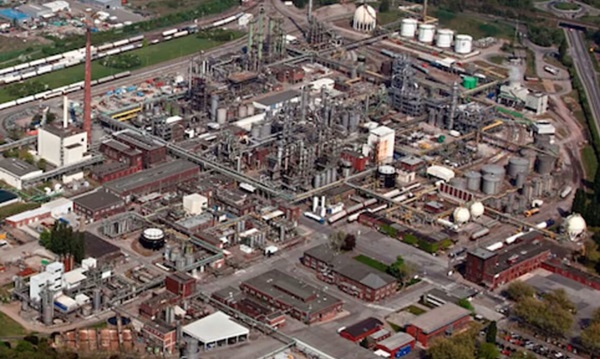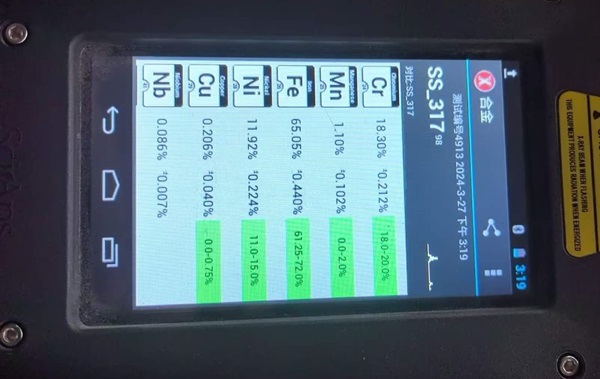Categories
- Technical & Application (25)
- Steel Tubing (20)
- Alloy Tubing (8)
Methyl Ethyl Ketone (MEK), or butanone, is a volatile, colorless liquid primarily used as a solvent in coatings, adhesives, and chemical production. It is highly effective in dissolving resins and other synthetic polymers and serves as a degreasing agent and chemical intermediate. Methyl ethyl ketone is typically produced in petrochemical plants and refineries through the MEK unit, which is often part of larger chemical complexes that handle hydrocarbons and oxygenated solvents.

The MEK plant of INEOS group at Moers site in Germany, formerly owned by Sasol.
The process-water heat exchanger is a crucial piece of equipment in the MEK unit, which serves as the feedwater heater for the hydration reactor. The material of the tube side of this heat exchanger is usually TP317L stainless steel. The TP317L tubing shall be welded type in accordance with ASTM A249, which is the standard specification for welded austenitic steel boiler, superheater, heat exchanger, and condenser tubes. The tubes shall be made from flat-rolled steel by an automatic welding process with no addition of filler metal. Subsequent to welding and prior to final heat treatment, the tubing shall be cold worked to get precise cross-section area, wall thickness and length. Finally, ASTM A249 TP317L welded tubes shall be solution annealed at the temperature 1050°C, followed by a rapid quench.
ASTM A249 TP317L welded tubing has the nominal composition of 18Cr-13Ni-3Mo, designated with UNS number S31703:
TP317L is a low-carbon version of 317 stainless steel, offering improved corrosion resistance, particularly against chlorides and other harsh environments. This makes it ideal for applications like heat exchanger tubes in chemical processing and marine environments.

ASTM A249 TP317L welded U tubes for heat exchangers in a chemical plant in Netherlands.
The mechanical properties of ASTM A249 TP317L tubes typically include:
The higher chromium (Cr), nickel (Ni), and molybdenum (Mo) content in ASTM A249 TP317L compared to TP316L significantly enhances its corrosion resistance, particularly in harsh environments. The additional chromium boosts the formation of a protective oxide layer, while increased nickel improves toughness and resistance to reducing environments. Most notably, the higher molybdenum content in TP317L offers superior resistance to pitting and crevice corrosion in chloride-rich or acidic conditions, making it more suitable for aggressive environments, though at a higher cost than TP316L.

The PMI inspection performed by a handheld microscopic spectrometer on ASTM A249 TP317L welded tubing.
When used as heat exchanger, superheater, boiler and condenser tubes, TP317L is specified by both ASTM A213 (seamless) and ASTM A249 (welded). However, neither ASME Boiler & Pressure Vessel Code nor ASME B31 Code endorses the use of ASTM A213 TP317L seamless tubing, but both do allow for the use of ASTM A249 TP317L welded tubing. TP317L welded heat exchanger tubing can offer higher performance and reliability than seamless tubing due to modern manufacturing techniques that ensure better consistency in wall thickness, diameter, and quality. Moreover, welded tubing benefits from advanced welding and cold-working processes, improving mechanical properties and surface finish, which enhances corrosion resistance and fluid dynamics. Additionally, welded tubing is generally more cost-effective and readily available compared to seamless tubing, which may have variations in wall thickness and higher production costs.